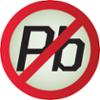Lead Free Legislation

Safe Drinking Water Act
The cornerstone of lead free standards started back in 1974 when the government passed the Safe Drinking Water Act (SDWA) to protect public health by regulating the nation's public drinking water supply. The SDWA allows the United States Environmental Protection Agency (EPA) to set standards for drinking water to protect against naturally-occurring and man-made contaminants found in drinking water.
In 1986 and 1996, numerous amendments to the law were introduced that helped change how the EPA, states, and water systems prepare for future drinking water safety challenges and assure the availability of safe drinking water.
Lead Contamination Control Act
As part of the amendment to strengthen the SDWA, Congress passed the Lead Contamination Control Act (LCCA) in 1988. The LCCA aimed to provide guidance to states and localities to test for and remedy lead contamination in drinking water in schools and day care centers. It also contained specific requirements for the testing, recall, repair and/or replacement of water coolers with lead lined storage tanks or with parts containing lead and attaches civil and criminal penalties for the manufacture and sale or water coolers containing lead.
Reduction of Lead in Drinking Water Act
On January 4, 2010 the President signed into law S. 3874, Reduction of Lead in Drinking Water Act. This law was an amendment to strengthen Section 1417 of the SDWA. This amendment made a major change to the definition of “lead-free”. The definition of “lead-free” reduced the current standard for lead content from 8% to a weighted average of not more than 0.25% in the wetted surface material. It also created exemptions for certain products.
Under the 2010 amendments to the SDWA, S.3874 (111th) Reduction of Lead in Drinking Water Act specifies:
SEC. 2. REDUCING LEAD IN DRINKING WATER.
(a) In General- Section 1417 of the Safe Drinking Water Act (42 U.S.C. 300g-6) is amended--
(1) by adding at the end of subsection (a) the following:
‘(4) EXEMPTIONS- The prohibitions in paragraphs (1) and (3) shall not apply to--
‘(A) pipes, pipe fittings, plumbing fittings, or fixtures, including backflow preventers, that are used exclusively for nonpotable services such as manufacturing, industrial processing, irrigation, outdoor watering, or any other uses where the water is not anticipated to be used for human consumption; or
‘(B) toilets, bidets, urinals, fill valves, flushometer valves, tub fillers, shower valves, service saddles, or water distribution main gate valves that are 2 inches in diameter or larger.’; and
(2) by amending subsection (d) to read as follows:
‘(d) Definition of Lead Free-
‘(1) IN GENERAL- For the purposes of this section, the term ‘lead free’ means--
‘(A) not containing more than 0.2 percent lead when used with respect to solder and flux; and
‘(B) not more than a weighted average of 0.25 percent lead when used with respect to the wetted surfaces of pipes, pipe fittings, plumbing fittings, and fixtures.












